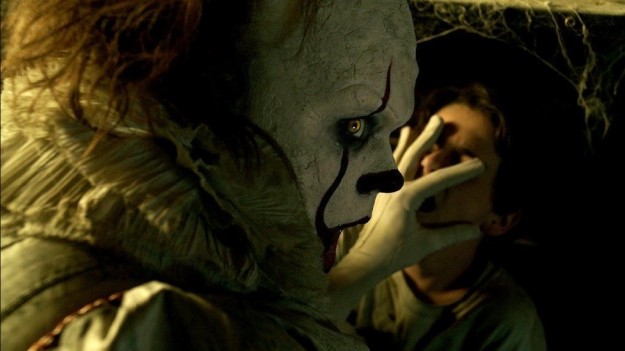

Warner Bros.
For a while, it seemed like It was never going to see the light of day: Warner Bros.’ adaptation of the epic Stephen King novel had been plagued by false starts over eight years of development. Cary Fukunaga was first attached to direct in 2012, with a script he cowrote with Chase Palmer. But Fukunaga exited the project in May 2015 over creative differences, later saying, “I was trying to make an unconventional horror film. It didn’t fit into the algorithm of what they knew they could spend and make money back on based on not offending their standard genre audience.”
After a brief period of uncertainty, It moved forward that July with a new director, Andy Muschietti, and a script rewritten by Gary Dauberman. Despite the ill omen of production turmoil, the film that finally arrived in theaters on Sept. 8 has proved to be a massive success, earning record-breaking box office numbers and raves from critics. While it’s not a conventional horror film, it’s undeniably more accessible than the version Fukunaga envisioned. BuzzFeed News has obtained a copy of the original Fukunaga-Palmer script, which is vastly different from what ended up onscreen. (A representative for Warner Bros. said the creative team was unable to comment due to scheduling.)
Here’s a look at the It that could have been: a darker, nastier, and likely less commercial affair.
1. The names have been changed, along with some character traits.
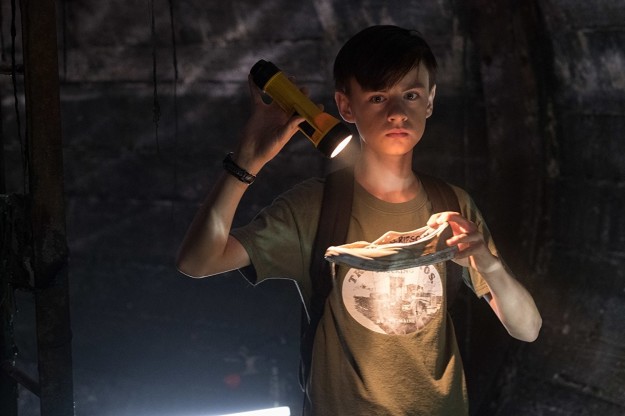
Warner Bros.
For reasons unknown, Fukunaga and Palmer changed some of the names from King’s novel. (BuzzFeed News reached out to Fukunaga’s publicist for a comment on this, as well as the other changes outlined in this post.) In their script, Bill is Will — an especially odd choice, as those are basically the same name — and Henry Bowers is Travis Bowers. Everyone else gets to keep their original names, thankfully. The more jarring change about Bill — er, Will — is that he doesn’t stutter. It’s not exactly essential to the plot, but it’s one of his most defining characteristics.
2. There are way more parents.
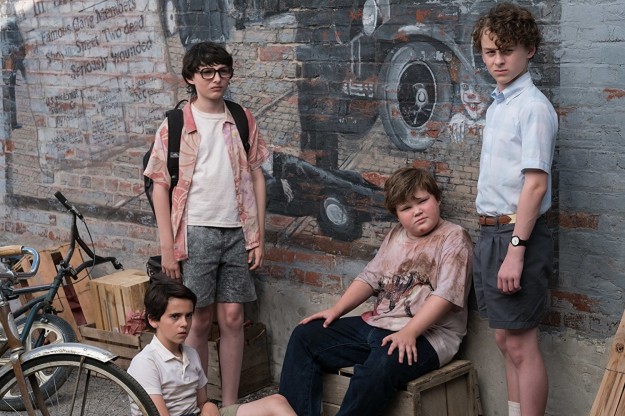
Warner Bros.
In Fukunaga and Palmer’s version, Beverly’s mom is alive and well, although she doesn’t have much to do aside from a scene in which she dangles a used tampon in front of her daughter’s face. (There’s…a lot about menstruation in this script. More on that below!) Will’s mom is also around, broken and withdrawn following the death of her youngest son, George. And, perhaps most importantly, Mike has two living parents. As in the novel, Mike’s father tells his son about his own encounter with Pennywise, making him the only adult to comprehend what’s really going on in Derry.
3. There’s a bit more homophobia…
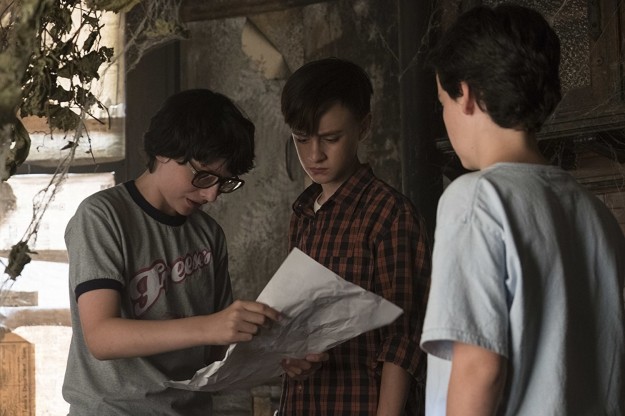
Warner Bros.
In King’s novel, the bigotry lurking beneath Derry is directly linked to It: He feeds on the hatred, but he also infects the citizens of the town so that they act on it. It’s not just the racism directed at Mike and his family, but also violent homophobia. The novel depicts a brutal hate crime in which Adrian Mellon, a gay man, is beaten nearly to death by a group of teens; Pennywise arrives to finish him off. While Fukunaga and Palmer’s script does not feature Adrian — which would be in the sequel, anyway — it does incorporate some casual homophobia among our heroes. When Richie and Will are parting ways, Richie says, “Don’t fag out.” Will responds, “Fag you later.” Unpleasant, to be sure, but not inaccurate for young teens in the late ’80s!
4. And the racism is far more spelled out.
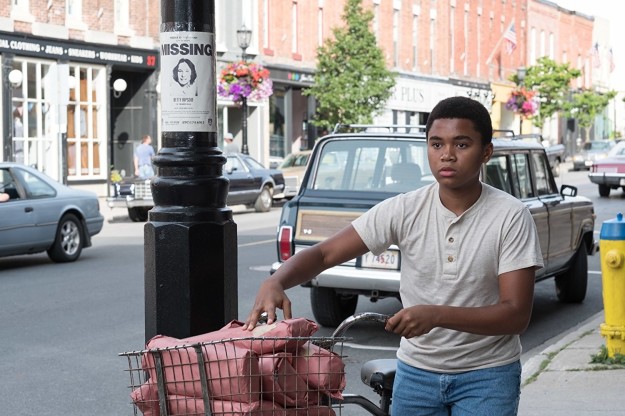
Warner Bros.
The racism is much more surface-level in Fukunaga and Palmer’s iteration of It than in the version in theaters. In the Muschietti film, Henry tells Mike to get out of his town. In the earlier script, Travis calls Mike the n-word, accuses him of stealing his knife, and brands him a “jungle monkey.” His father, Officer Bowers, is just as abhorrent, dragging Mike in for questioning after Patrick Hockstetter disappears. He repeatedly calls Mike “boy” and later refers to him as the “Negro boy.” By clearly underlining the deep-seated racism that infects Derry, this version of It provides a fuller portrait of Mike’s isolation — he’s not an outsider by choice.
The script also reveals how Mike’s father narrowly escaped the burning of a black nightclub, The Black Spot, when he was younger. The It in theaters alludes to this horrific incident in Derry’s racist history, but Fukunaga and Palmer opted to show it all. Which brings us to…
5. There are major flashbacks.
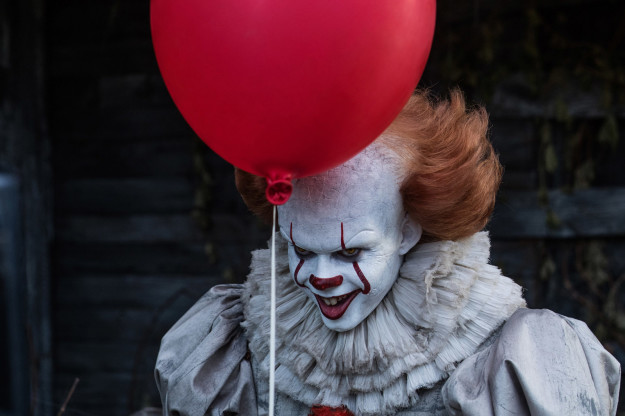
Warner Bros.
As he’s dying of cancer in the Fukunaga-Palmer script, Mike’s father, Leroy, recounts the awful night the Black Spot was burned down — and we see it all. A 13-year-old Leroy has snuck into the club with his friend Dick. (The script doesn’t mention this, but book readers know that this is Dick Hallorann, whom you might remember from The Shining.) It’s not long before the Legion of Decency, Derry’s version of the Ku Klux Klan, barricades the doors and sets the club ablaze, killing nearly everyone inside. Leroy and Dick barely make it out, and come face to face with Pennywise, dragging away the corpses. “This town is like poison,” Leroy concludes.
That’s not all we see of Derry’s violent past in Fukunaga and Palmer’s telling. Later on, we get an exceedingly blood-soaked flashback to the Silver Dollar Saloon in 1879. As in the novel, Claude Heroux slaughters everyone around him with an axe, driven to madness by Pennywise. While the scene would have significantly upped the gore, it’s also notable for making clear that It has the power to make people do very bad things; similarly, the Black Spot flashback implies that It spurred the already hateful Legion of Decency to commit mass murder. The most unsettling part of the Silver Dollar Saloon scene? The patrons Claude doesn’t kill scarcely notice his spree, even when a decapitated head lands near a drunk’s foot. The moment underlines another aspect of It’s power: the ability to make the citizens of Derry look past the very awful things happening right before their eyes.
6. The threat is more overtly sexual.
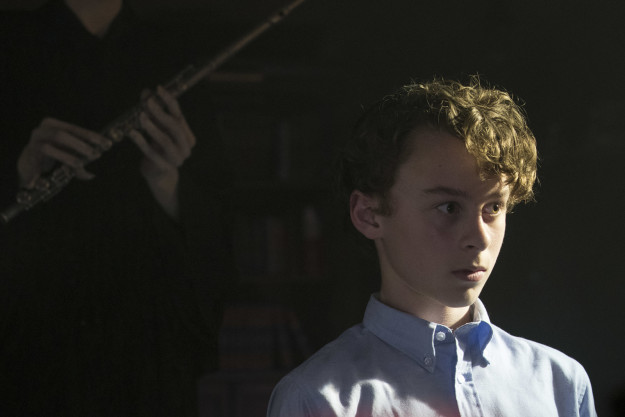
Warner Bros.
Beverly’s fear of becoming a woman is subtext in the Muschietti film. In the Fukunaga-Palmer script, there are repeated references to menstruation designed to make the metaphor abundantly clear. Beverly’s mom explains her period in these unpleasant terms: “When it happens, once every 27 days, you’ll bleed, and you’ll bleed the most right before the end.” (Surely there’s a less traumatic way of relaying that information?) Recall that It resurfaces every 27 years. And when the kids are discussing how It manifested their fears, Beverly actually says, “‘IT’ showered me in blood because I just got my period.” Not subtle!
There’s more. Stan’s encounter with It is wildly different and takes place in his temple’s mikveh, where women bathe to purify themselves after menstruation. And it’s also tied to his fears of growing up and his burgeoning sexuality. Here, It appears to him as a naked woman in a tub who attempts to seduce him by saying, “You’re going to be a man soon, won’t you? I’ll show you mine if you show me yours.” When the woman rises, he sees that she’s covered in sores and missing chunks of flesh — it’s pretty much exactly like that scene in The Shining. King’s novel never shied away from the sexual development of his young characters — sometimes to a fault — but it’s hard to imagine how audiences would have felt seeing it play out on the big screen.
And then there’s Beverly’s father. The movie hints at his incredibly upsetting desire for his daughter, but the original script took it to a whole other deeply uncomfortable level. After discovering the haiku Ben wrote for Beverly, Mr. Marsh demands that she take off her tights so that he can check to see if she’s “intact.” It’s clear that he intends to rape her, and that Pennywise is somehow possessing him. “You’ll like it, Bevvie,” he says. “Be like you’re floating.” Beverly fights him off exactly as she does in the Muschietti movie, but Pennywise isn’t there to grab her — and that changes everything.
7. The climax is completely different.
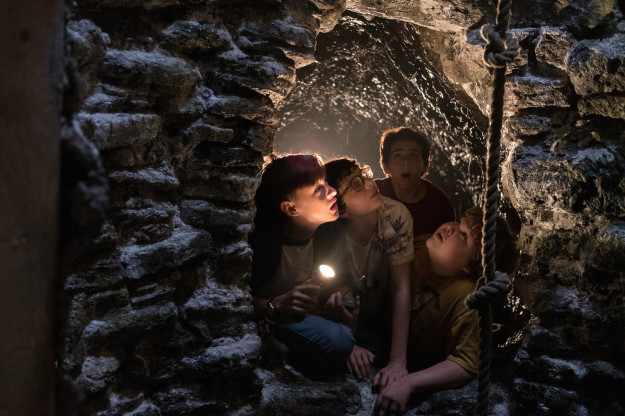
Brooke Palmer
Beverly is not the damsel in distress in the Fukunaga-Palmer script; instead, she’s an active agent who decides, along with her friends, to go down to It’s lair and kill Pennywise before he can make any more adults do horrific things. In this version, it’s not Beverly who encounters the deadlights, but Stan — he’s pulled away before he loses it entirely, although the trauma he endures surely has something to do with his ultimate fate. The way the kids defeat Pennywise is pretty similar, though at one point, It manifests as a tentacle monster. So that’s new. And while the novel’s infamous gang-bang scene is mercifully avoided, Beverly pointedly takes every boy’s face in her hands so they can find the way out. It’s a pretty clear reference, and not even a little bit nauseating!
8. And there are changes to the ending, too.
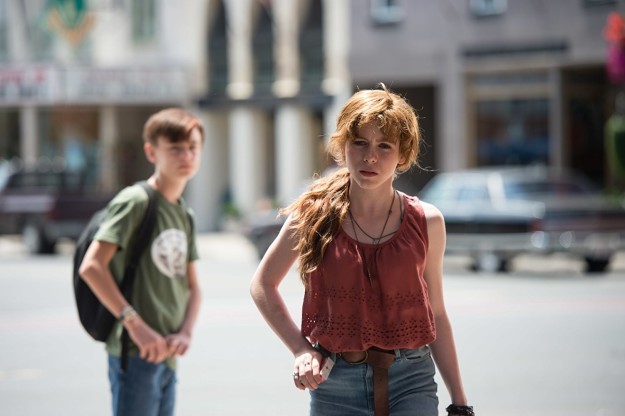
Warner Bros.
As in the novel, Travis’s hair turns white after his encounter with It. The Muschietti film left Henry’s fate ambiguous — the fall should have killed him, but who knows — while the original script has Travis taken into custody for killing his father. As for the Losers Club, they still make their blood oath, but there’s no kiss between Will and Beverly. There is, however, a somewhat happier ending, in which they gather again to say goodbye to Will, who is going on vacation with his parents, seemingly less traumatized from George’s death. But the camera lingers on the scars on their hands — and a red balloon floats above them. It’s hard to imagine the Fukunaga-Palmer version of It finding as large an audience as the Muschietti film did, but a sequel was always part of the plan.

